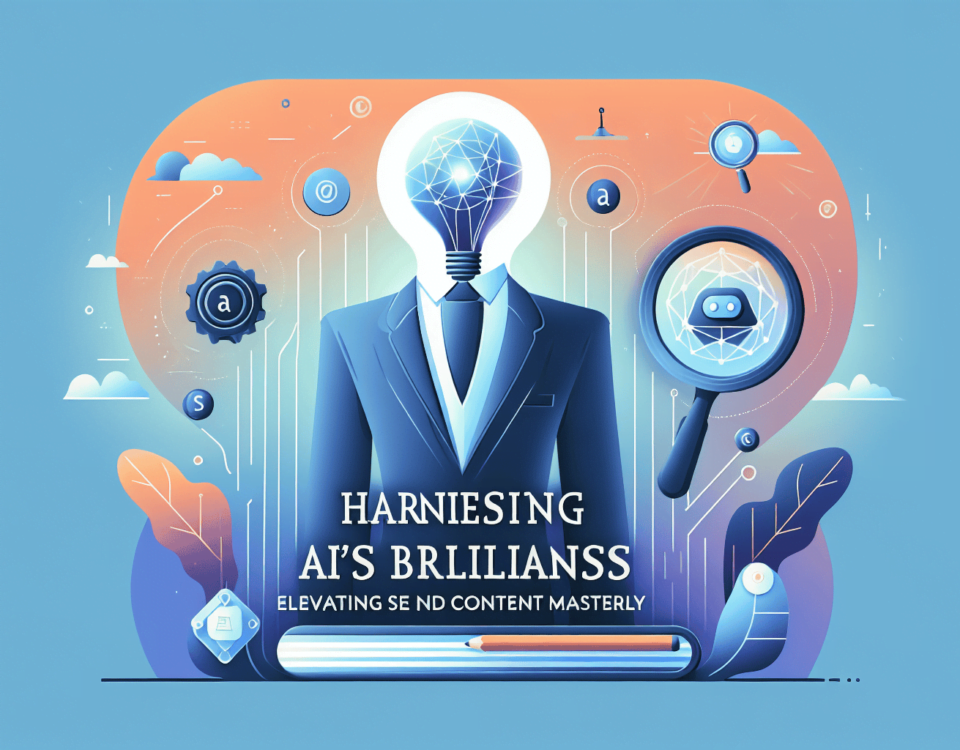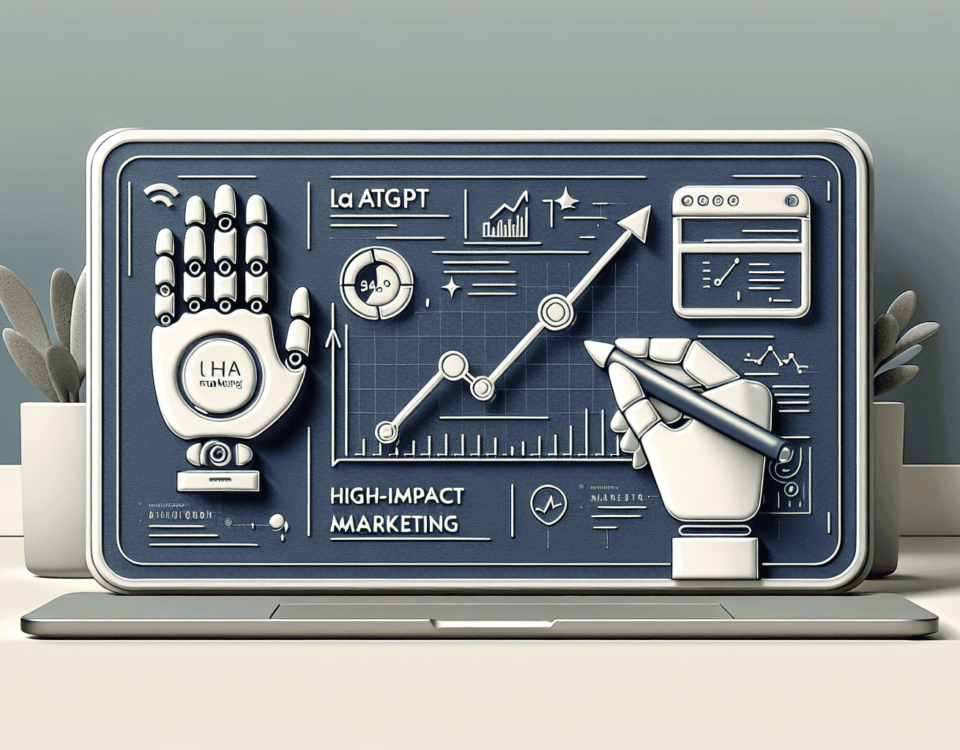Introduction to the Intersection of AI and Neuromarketing
The fusion of artificial intelligence with neuromarketing has unfurled new horizons in understanding the intricate dance of consumer decision-making. This confluence promises to usher in an era of marketing that precisely taps into the undercurrent of subconscious desires, sculpting tailored experiences that resonate deeply with individual consumers. It is here that we stand witness to a revolution in insights, driven by AI’s analytical prowess.
AI’s impact on neuromarketing is colossal, shaking the very roots of traditional methodologies. It offers a leap from mere observation to profound interpretation, transforming noise into a symphony of actionable data. As AI and neuromarketing meld, they create a more granular map of the consumer’s mind, one that promises to transform the art of persuasion into an exact science.
With an unwavering gaze into the cognitive processes that drive consumption, this unison is set to decode the nuanced language of human emotion and behavior. Herein lies a narrative of progress, marked by the sweeping tides of technological ingenuity. Thus, with keen anticipation, we embark on a journey to decipher the secrets of desire through the lens of AI-powered neuromarketing.
Peeling Back the Layers of the Consumer Mind
At the crux of consumer psychology lies a labyrinth of motivations and inclinations, often cloaked in the mystery of the subconscious. Neuromarketing has aimed to illuminate these hidden corridors, dissecting the stimuli that sway the pendulum of decision-making. With the advent of AI, the pursuit of comprehension has found a new custodian capable of delving ever deeper into the enigma of choice.
AI algorithms, with their proficiency in pattern recognition, empower marketers to perceive the nuances of consumer behavior. They dissect vast arrays of data, sifting through the motley of neurological signals to unearth underlying preferences and tendencies. The integration of machine learning models has thus expanded the scope of neuromarketing from a compound microscope to an electron microscope of consumer thought.
In the nuanced domain of cognitive processes, we find that consumers are not always the rational actors classical economics would have us believe. AI’s contribution to neuromarketing not only substantiates this but also predicts these irrationally rational behaviors—behaviors dictated by a blend of cultural, emotional, and psychological factors that traditional survey methods may overlook.
The Evolution of Neuromarketing Tools
To comprehend the evolutionary arc of neuromarketing, we trace its lineage from the early applications of eye-tracking and EEG. The tableau of neuromarketing research was thus painted in broad strokes, capturing attention and arousal but begging for a more discerning palette. As technology advanced, so too did the tools at the disposal of neuromarketers.
Functional Magnetic Resonance Imaging (fMRI) added a vibrant depth to the picture, though its utilization remained constrained by logistical impracticalities. Now, with AI’s involvement, the brushes have been fine-tuned, the colors made more vibrant, and the resolution heightened. AI transforms raw neurological feedback into profound insights, providing a more nuanced understanding of customer engagement.
Neuroimaging and biometric sensors feed AI with data, which it then elegantly translates, revealing not just where consumers look but how they feel. These technological advancements are but a prelude to a future where the marriage of AI and neuromarketing might render traditional focus groups and surveys obsolete—replaced by real-time analytics of sentiment and a deeper appreciation for the cognitive ballet that precedes every decision to purchase or pass.
AI’s Role in Deciphering Subconscious Desires
Within the realm of marketing, desire assumes a central role—a silent whisper guiding the hand toward acquisition. AI’s contributions to neuromarketing reflect an insightful interlocutor, interpreting the unspoken impulses that draw consumers towards particular products or brands.
- AI maps out neural networks, mirroring the convolutions of desire as they are triggered through strategic marketing stimuli.
- Algorithms expertly unravel the threads of emotional resonance, separating fleeting interest from deep-seated affinity.
- Through machine learning, AI identifies subtle patterns, transforming isolated neurological blips into coherent narratives of preference.
It is in these capillaries of cognition that AI finds its niche, applying pressure to the pulse of the consumer condition. Through this analysis, AI illuminates the subconscious inclinations that escort our choices, allowing marketers to align their strategies with the silent yearnings of their target audiences.
Emotional Analytics: AI’s Foray into Feeling
There is an intrinsic link between emotion and memory; one that marketing has long aimed to exploit. AI enters this domain as an innovative artisan, sculpting campaigns that not only captivate but also resonate on an emotional level. Through the combination of facial recognition, tone analysis, and sentiment mining, AI touches the heartstrings that motivate purchasing decisions.
The deployment of machine learning algorithms facilitates an unprecedented level of insight into the rich tapestry of human emotion. By analyzing physiological and verbal cues, AI discerns joy, surprise, or dissatisfaction. Such emotional analytics offer a comprehensive view of consumer responses, revealing the depth of engagement with a product or campaign.
Through these insights, marketers are equipped to tailor their messages with deft precision. The goal is to form resonant narratives that align with the consumer’s emotional landscape, establishing authentic and lasting connections between brand and buyer.
Through the Eye of AI: Predicting Purchase Patterns
The predictive prowess of AI stands as one of its most sterling attributes within neuromarketing. By assimilating data from past consumer interactions, AI offers a prescient glimpse into future behaviors. It can project purchase patterns, recognizing the signals that herald a sale or forewarn a failing proposition.
The algorithms entrenched in the software of marketing analytics are vital to predicting not just what a consumer will buy but when and under what circumstances. This foresight not only informs inventory and supply chain strategies but also allows for the dynamic personalization of marketing efforts—timing the pitch when the consumer is most receptive.
As we continue to probe the font of AI’s capabilities, it becomes apparent that the tools provided by AI are far from deterministic machinery. Rather, they are complex systems that appreciate the malleable nature of desire, adapting and evolving with the shifting sands of consumer sentiment.
Case Studies: AI’s Triumph in Unveiling Consumer Emotions
Turning from theory to application, we find a myriad of case studies that exemplify AI’s success in distilling clarity from the haze of consumer emotions. Notable instances include AI’s ability to discern the effectiveness of Super Bowl ads, tuning into the emotional responses of audiences to predict commercial success with remarkable accuracy.
In retail, AI, combined with neuromarketing, has been utilized to adjust store layouts, optimizing them for an enhanced shopping experience that subtly encourages sales. Brands like Coca-Cola and PayPal have leveraged these insights to refine their advertising campaigns, tapping into the underlying psychological factors that trigger consumer response.
Thus, we see that AI is not merely an elaborate adjunct to the marketer’s toolkit but a crucible within which a deeper understanding of consumer behavior is forged—casting light upon the shadows where emotion and cognition coalesce.
The Algorithm of Choice: AI and Decision Psychology
In the psychological scaffolding that supports choice, AI functions as an analytical cornerstone, identifying the constructs that motivate decisions. Decision psychology, intricately interwoven with neuromarketing, finds in AI an insightful partner, one adept at quantifying the intangible weights of cognitive biases and heuristics.
Through these analytical feats, AI delineates the contours of decision-making, providing a framework for understanding choice not as a fine point but as a spectrum. Within this framework, AI anticipates the impact of diverse product features, brand stories, and pricing strategies.
To harness the power of AI within this domain is to harness a windfall of insights, allowing for a calibration of marketing strategies that resonate with an audience’s internal compass of choice and, in turn, influence their purchasing behavior.
Ethical Implications: The Fine Line in AI Neuromarketing
As we embrace AI’s strengths in neuromarketing, we must also confront the ethical dimensions that shadow this powerful combination. The capacity to manipulate consumer behavior raises profound questions about the integrity of marketing practices and the sanctity of individual autonomy.
There is a delicate balance to be struck between leveraging AI for competitive advantage and upholding the ethical standards that honor the consumer’s right to make uninfluenced choices. Responsible application of AI in neuromarketing demands transparency, privacy considerations, and a measured approach that respects the consumer’s mental space.
The dialogue on ethics is not simply a box to be checked but a continuous conversation that evolves as AI technology becomes more sophisticated. It is a dialogue that requires the engagement of all stakeholders to ensure that the power of AI serves to enhance, not exploit, the consumer experience.
Navigating the Future: AI’s Predictive Power in Marketing Trends
Looking ahead to the horizon, it is clear that AI’s predictive capacity will assume center stage in discerning future marketing trends. By analyzing global currents of data, AI prognosticates the fluctuations of market appetites, shaping the marketing landscape of tomorrow.
The predictive analytics derived from AI-powered neuromarketing tools furnish marketers with a crystal ball, allowing them to adapt their strategies to the emerging patterns and preferences of a dynamic consumer base. This foresight is invaluable, not merely for its prescience but for its ability to guide investment in innovation and product development.
As we chart the course for future exploration in this field, it is evident that the marriage of AI and neuromarketing holds the promise of a preeminent position in the arsenal of marketing technology—driving the evolution of campaigns that captivate, connect, and convert like never before.
Overcoming Challenges: AI’s Limitations in Neuromarketing
Despite the vast potential AI brings to neuromarketing, there are inherent challenges and limitations to its integration. These range from the need for massive datasets to train AI algorithms effectively, to potential biases in the data that could skew interpretations and outcomes. Moreover, the rapid pace at which technology evolves poses a challenge for regulatory frameworks to adapt and ensure ethical usage.
Data security is another critical concern, as the sensitive nature of neuromarketing research necessitates robust protection mechanisms to prevent unauthorized access and misuse. While the frontier of AI in neuromarketing beckons with promise, it is imperative to navigate it with caution, prioritizing the ethical treatment of data and individuals.
Furthermore, the nuanced understanding of cultural differences and socio-economic factors also suggests that AI in neuromarketing cannot solely rely on algorithms. Instead, it needs the perceptive subtlety of human interpretation to fully actualize its potential in the diverse tapestry of global consumer behavior.
Practical Insights: Leveraging AI for Neuromarketing Success
Focusing on actionable advice, businesses looking to leverage AI in neuromarketing should consider adopting a multifaceted approach. Firstly, investing in the right tools and technology that allow for accurate data collection and analysis is paramount. Coupled with this, the ongoing education and training of marketing teams will enable them to extract the full range of benefits from AI applications.
It’s also essential to foster a collaborative environment where data experts and marketers work in tandem, translating complex insights into practical strategies. Furthermore, it is crucial to stay abreast of ethical standards and regulations, integrating them into all neuromarketing activities to preserve consumer trust.
By imbuing AI with a nuanced understanding of the human element, marketers can elevate their campaigns, driving success through a blend of cutting-edge technology and genuine consumer connection.
Conclusion: The Mind’s Marketplace Under AI’s Lens
In closing, we elevate our perspective to appreciate the full vista of possibilities AI brings to neuromarketing. It is an endeavor that extends beyond mere analysis; it is about cultivating understanding and aligning strategies to the resonant core of human desire. The potential of AI to not only parse but predict and even shape consumer inclination marks a new epoch in marketing, characterized by an intimate dialogue between brand and consumer.
As we progress further into an era where AI is an integral part of the marketing framework, it is imperative to wield this technology with a responsibility that matches its vast capability. Doing so will ensure that the future of marketing epitomizes a synergy between consumer insight and technological sophistication.
Lastly, for those yearning to delve deeper into the synergy of AI and neuromarketing, a plethora of resources beckon. Academic journals, industry whitepapers, cutting-edge research, and interdisciplinary conferences serve as wellsprings of knowledge for the voracious minds seeking to harness the transformative power of AI in unraveling the tapestry of human desire.
Further Exploration: Resources and Continued Learning in AI Neuromarketing
To navigate the tides of AI in neuromarketing is to embark upon an expedition of continuous learning. A selection of resources that can illuminate this path includes:
- The Neuromarketing Science & Business Association (NMSBA) offers a wealth of information, including publications and networking opportunities.
- Leading academic journals like “Journal of Consumer Psychology” and “Neuropsychologia” provide peer-reviewed research into the interplay of neuroscience and marketing.
- Platforms such as Coursera and edX offer online courses that delve into topics ranging from AI and machine learning to behavioral neuroscience and marketing analytics.
- Industry conferences and symposiums provide a dynamic environment for engaging with thought leaders and exploring the latest innovations in the space.
By immersing oneself in these repositories of wisdom, one can foster an enlightened understanding of the revolutionary strides AI is making in the field of neuromarketing, carving out a niche where technology meets the tapestry of human emotion.




